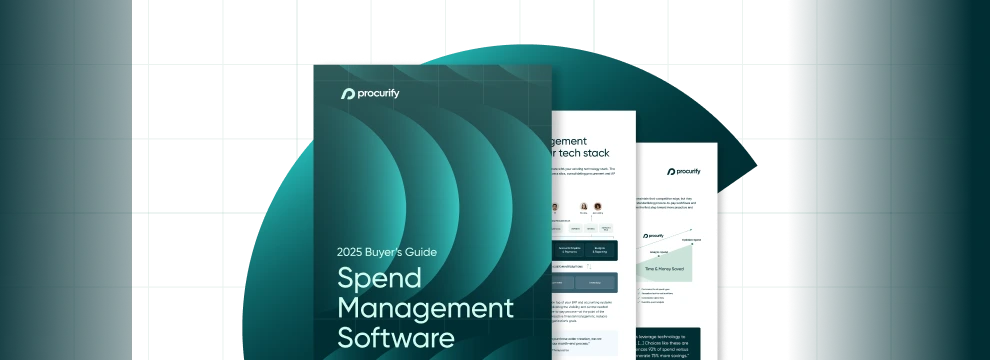
Purchase Orders vs Invoices: What’s the Difference and Why It Matters
Every business transaction involves multiple steps, from ordering goods to making payments. To keep everything organized and track financial commitments, businesses rely on two essential documents: purchase orders (POs) and invoices.
A purchase order is a document issued by a buyer to request goods or services before delivery, while an invoice is a request for payment sent by the seller after delivery. Though they might seem similar, their roles are distinct, and understanding the differences is crucial for financial accuracy, cash flow management, and compliance.
In this post, we’ll break down purchase orders vs invoices, explain their key differences with examples, and highlight why they are essential for efficient business transactions.
What is a purchase order (PO)?
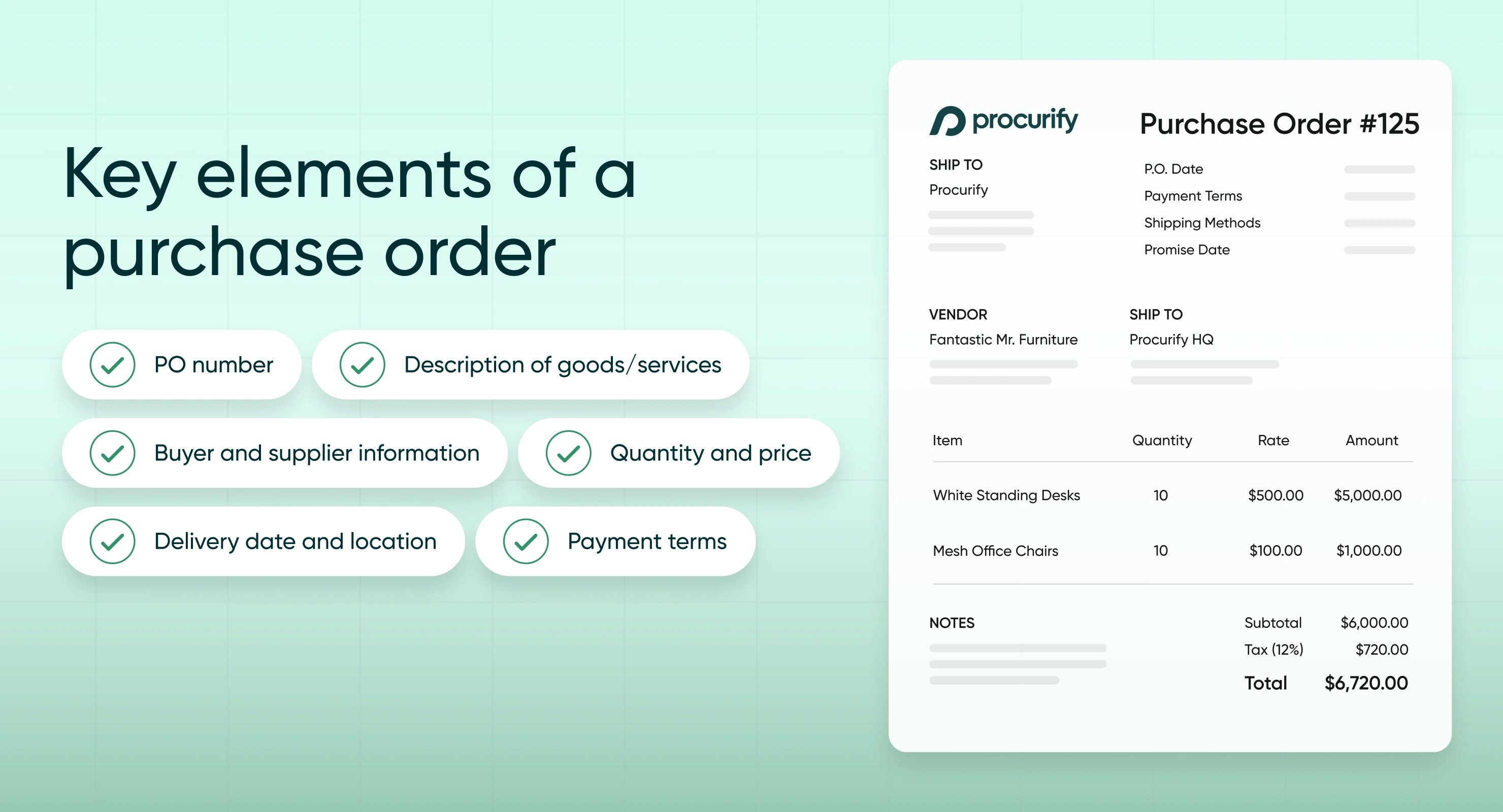
A purchase order (PO) is a formal document issued by a buyer to a vendor or supplier to request goods or services. It serves as a binding agreement that outlines the details of the purchase before the supplier fulfills the order.
Key elements of a purchase order:
A well-structured PO includes:
-
PO number – A unique identifier for tracking the order.
-
Buyer and supplier information – Names and contact details of both parties.
-
Description of goods/services – Clear details about what is being ordered.
-
Quantity and price – The number of items or services and their agreed prices.
-
Delivery date and location – When and where the goods should be delivered.
-
Payment terms – Conditions under which the buyer will pay for the goods.
Purchase order hypothetical example
Imagine a retail store orders 100 office chairs from a furniture supplier. The store issues a PO that includes the chair model, quantity, price per unit, and delivery date. Once the supplier receives the PO, they confirm and process the order.
A PO prevents misunderstandings and ensures the buyer and seller are on the same page before the transaction is completed.
What is an invoice?
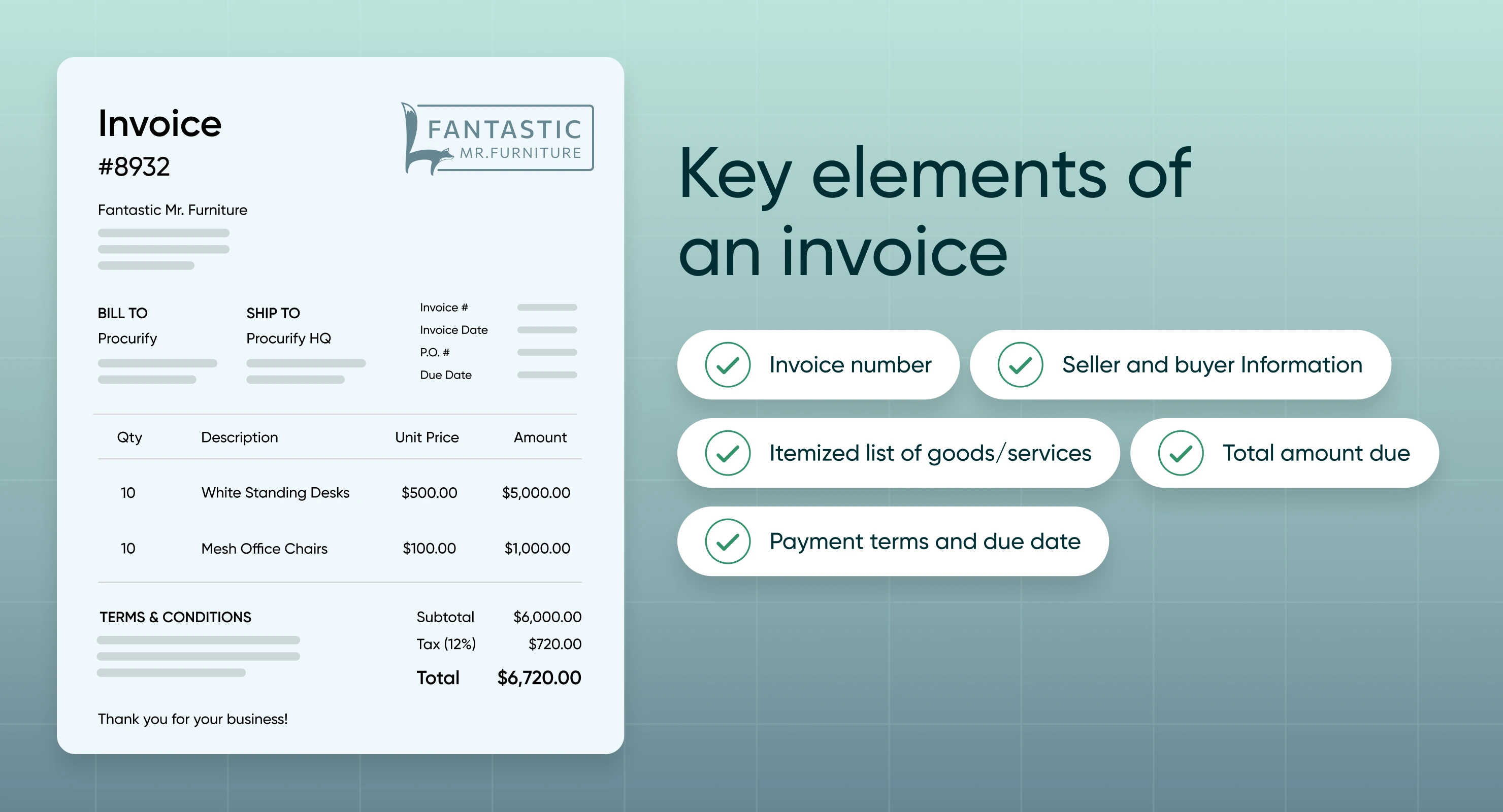
An invoice is a document issued by a seller to a buyer requesting payment for goods or services delivered. Unlike a purchase order, which is issued before delivery, an invoice comes after the goods or services have been provided.
Key elements of an invoice:
A standard invoice includes:
-
Invoice number – A unique identifier for record-keeping.
-
Seller and buyer Information – Names and contact details.
-
Itemized list of goods/services – Description, quantity, and price.
-
Total amount due – The full amount the buyer owes.
-
Payment terms and due date – When and how payment should be made.
Hypothetical invoice example
After delivering the 100 office chairs, the furniture supplier sends an invoice to the retail store. The invoice includes the total cost, due date, and bank details for payment.
An invoice acts as a financial record and ensures the seller gets paid for their services.
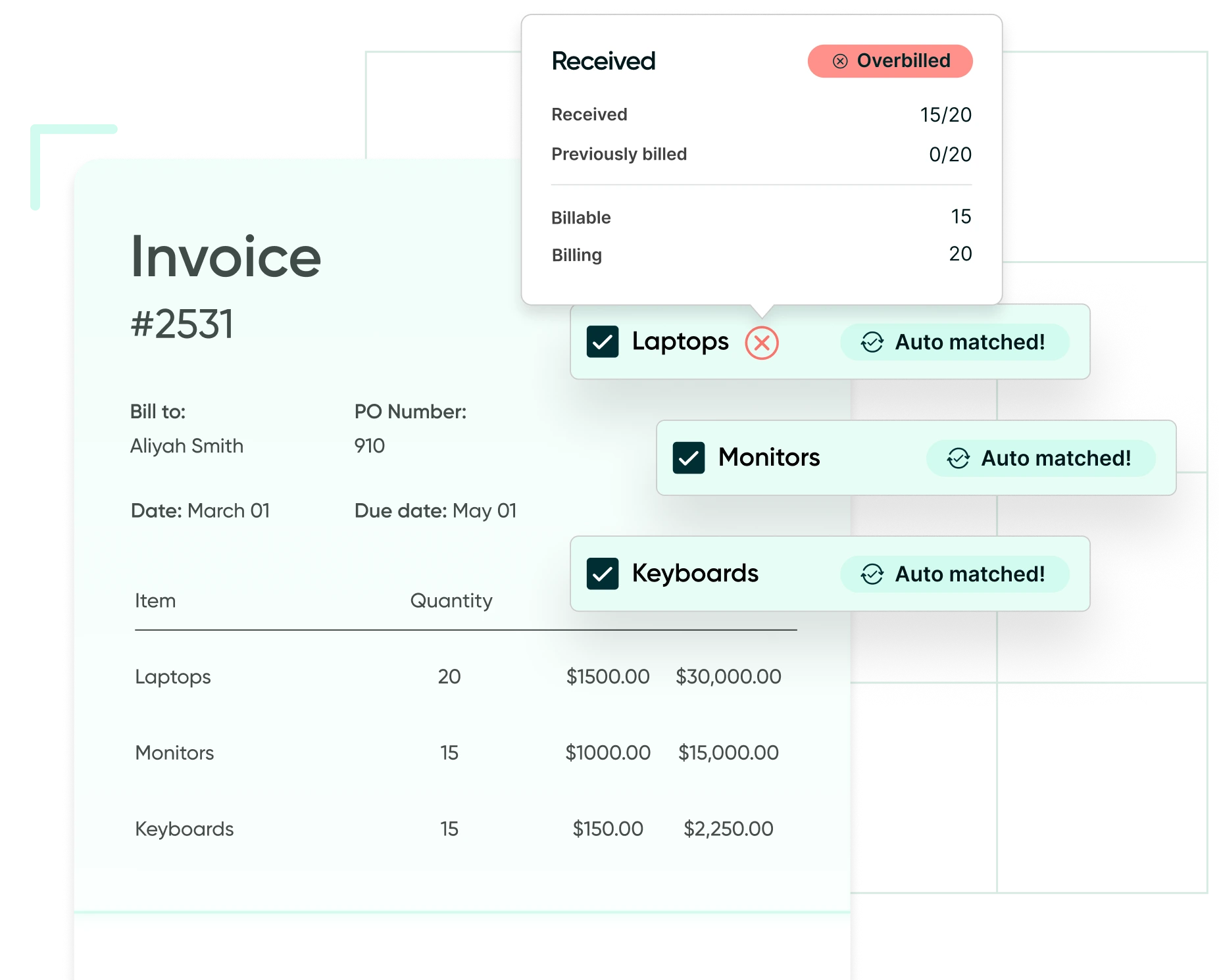
Looking for better spend control and automation?
Explore Procurify’s AI-powered procurement solutions to simplify your purchasing and invoicing workflows.
Purchase order vs invoice: key differences
While both purchase orders and invoices are critical for business transactions, they serve different purposes.
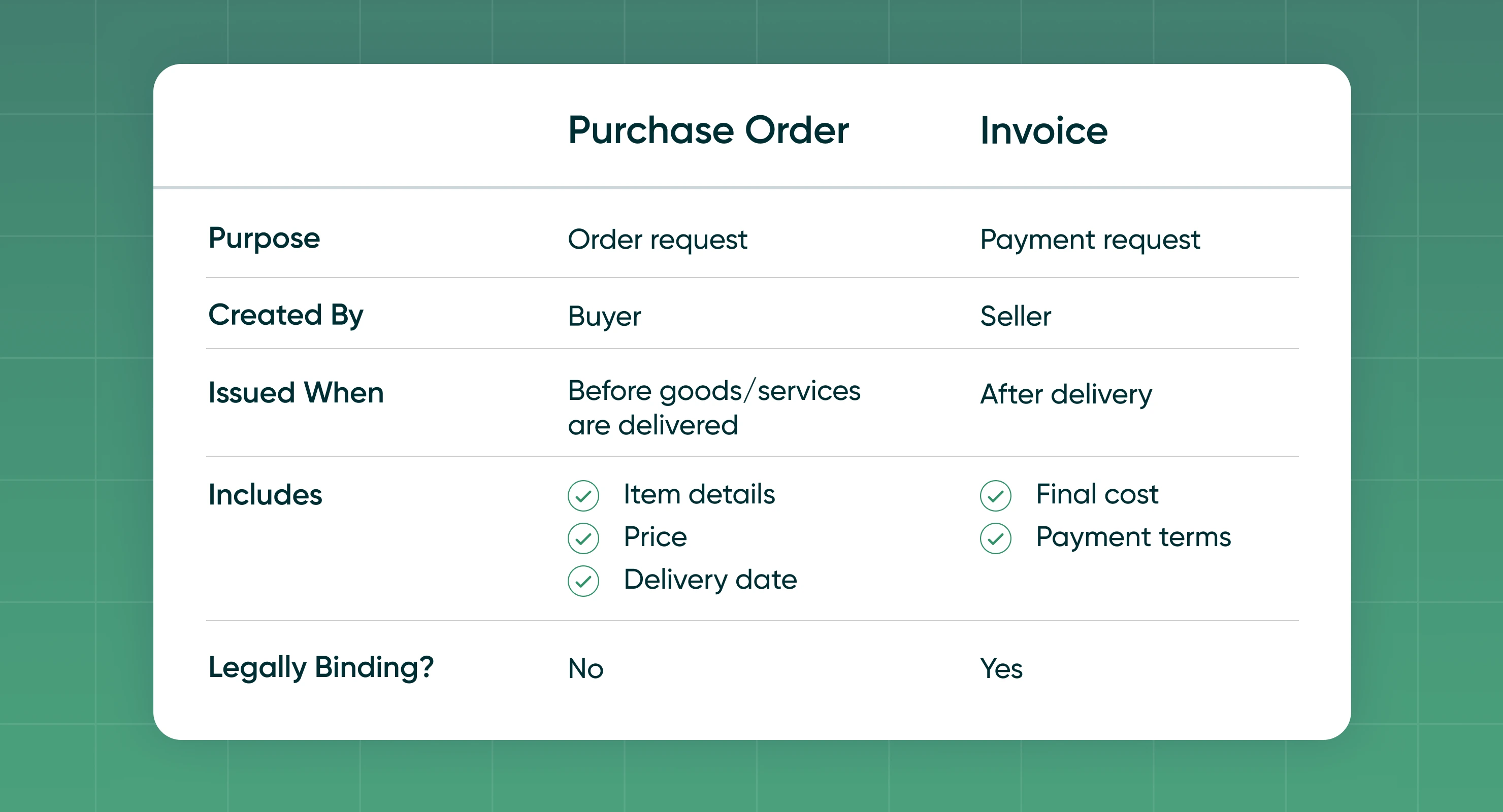
Why these differences matter
-
Purchase orders help prevent order disputes by documenting what was agreed upon before a sale.
-
Invoices ensure sellers get paid by formalizing payment requests.
-
Using both improves financial tracking, making it easier to manage budgets and cash flow.
Businesses that follow structured procurement and payment processes minimize financial risks and improve operational efficiency.
Why are POs and invoices important in accounting?
Both purchase orders and invoices play a crucial role in financial management by helping businesses track expenses, revenues, and compliance.
Purchase orders provide a record of commitments before any money is spent, ensuring that businesses can monitor anticipated costs. Invoices, on the other hand, document actual payments owed, creating accurate financial records that support reconciliation and reporting. Together, they establish a clear audit trail, making financial tracking more transparent and reliable.
Beyond record-keeping, purchase orders and invoices contribute to better tax compliance and cash flow management. By tracking outstanding POs, businesses can forecast expenses more accurately, ensuring they are prepared for upcoming payments. Invoices play a key role in tax filings, helping organizations account for all transactions and avoid discrepancies. Proper documentation also prevents duplicate payments or fraudulent transactions, adding an extra layer of financial security.
Leveraging procurement automation software can further enhance the efficiency of PO and invoice management, reducing errors and streamlining processes for finance teams.
Common questions about purchase orders and invoices
Strengthening financial control with POs and invoices
Both purchase orders and invoices are essential financial documents that support smooth business operations. While POs track orders before payment, invoices ensure sellers get paid.
By implementing best practices in procurement and payment management, businesses can improve financial accuracy, avoid disputes, and streamline cash flow.

Webinar: 5 Strategies for Cost Reduction and Value Creation
Learn how best-in-class procurement leaders are leveraging the right technology to streamline operations, reduce costs, and improve the effectiveness of their purchasing.
